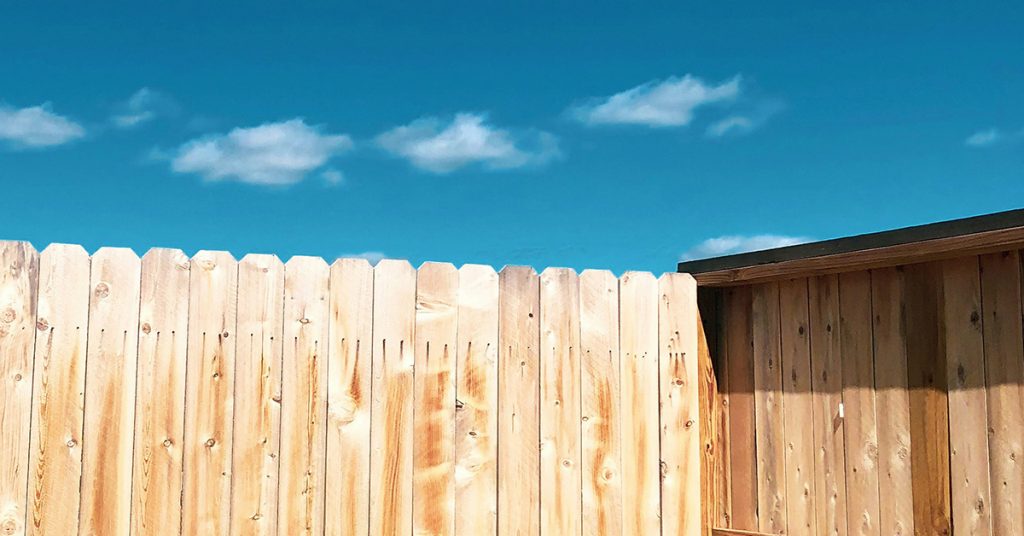Fencing around a home serves multiple purposes, ranging from enhancing privacy and security to defining property boundaries and adding aesthetic appeal. When it comes to installing a fence, one of the critical decisions you’ll face is determining its height. The right fence height not only meets your functional needs but also complements your property’s style and adheres to local regulations. Here’s a comprehensive guide to help you choose the best fence height for your home.

Understanding Local Regulations and Codes
Before you start planning your fence height, it’s essential to research local regulations and homeowner association (HOA) guidelines. Many areas have specific rules governing fence height, particularly in residential neighborhoods. These regulations often dictate maximum allowable heights based on factors such as zoning laws, proximity to sidewalks and roads, and property line setbacks. Non-compliance could result in fines or forced modifications, so it’s crucial to begin by checking with your local planning department or HOA.
Privacy and Security Concerns
Privacy and security are the primary reasons homeowners install fences. The fence height directly impacts how effective it is in achieving these goals. Taller fences (typically 6 feet or higher) provide greater privacy by obstructing the view from neighboring properties and passersby. They also offer better security by making it harder for intruders to enter and deter potential trespassers.
For maximum privacy, consider a fence that is at least 6 feet tall. This height is ideal for blocking direct views into your yard and home without being excessively tall or obtrusive.
Aesthetic Considerations
Aside from functionality, the aesthetic appeal of your fence should harmonize with your home’s architecture and landscaping. A fence that is too tall might overpower a small yard or clash with the style of your house. Conversely, a fence that is too short might not provide enough visual impact or security.
For a balanced look, match the fence height to the scale of your home and surrounding landscape. A shorter fence (around 3 to 4 feet) works well for front yards, where it enhances curb appeal without creating a barrier between you and your neighbors. In backyard spaces, taller fences are more common to ensure privacy during outdoor activities.
Considering Your Neighbors
When choosing fence height, it’s courteous to consider how it will affect your neighbors. A towering fence might block their views or sunlight, potentially leading to disputes. Communication is key; discuss your plans with neighbors beforehand and take their concerns into account. In some cases, sharing the cost of a taller fence that benefits both properties can strengthen neighborly relations.
Functional Needs
Beyond privacy and aesthetics, consider the specific purposes your fence will serve. If you have pets that need containment, a fence of sufficient height (typically 4 to 6 feet) is essential to prevent them from escaping. For areas prone to wildlife or deer, taller fences may be necessary to deter animals from entering your property.
Climate and Environment
The local climate and environment can also influence your choice of fence height. In areas with heavy snowfall or strong winds, taller fences can provide additional protection and structural support. They can also help create microclimates within your yard, shielding delicate plants from harsh weather conditions.
Maintenance and Longevity
Lastly, consider the maintenance requirements and longevity of different fence heights. Taller fences may require more upkeep, such as periodic staining or repairs, due to exposure to elements like wind and sun. Shorter fences are generally easier to maintain but may need more frequent cleaning or trimming around the base.
Conclusion
Choosing the best fence height for your home involves balancing practical considerations with aesthetic preferences and regulatory requirements. By understanding local regulations, considering privacy needs, and evaluating aesthetic and functional factors, you can select a fence height that enhances your property’s security, privacy, and overall appeal. Remember, a well-chosen fence not only improves your home’s value but also enhances your enjoyment of outdoor living spaces. Whether you opt for a shorter decorative fence or a taller privacy fence, make sure it complements your home and reflects your personal style.
Finding the perfect fence height is a significant step towards creating a secure, private, and beautiful outdoor environment for you and your family. Take the time to explore your options and consult with fencing professionals to ensure your choice aligns with your needs and enhances your property for years to come. By investing in the right fence height, you’re not only enhancing your property’s aesthetics but also ensuring functionality and compliance with local regulations, creating a space that is both secure and visually appealing.